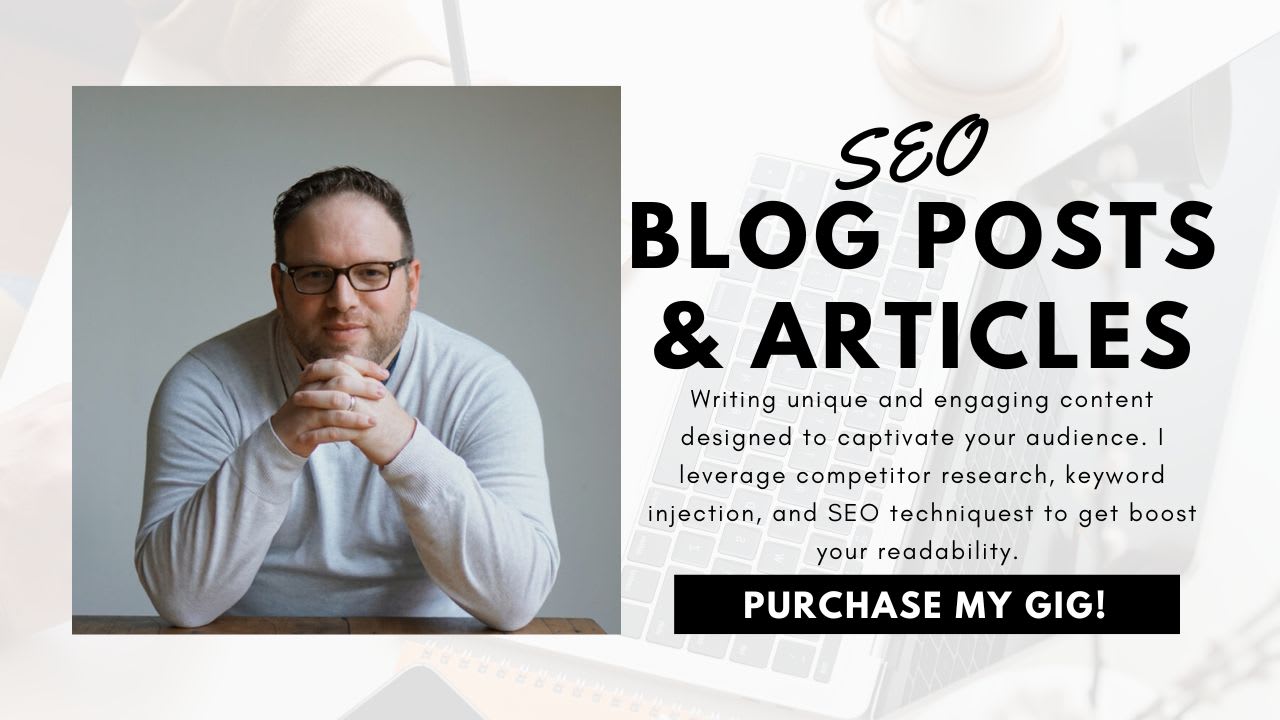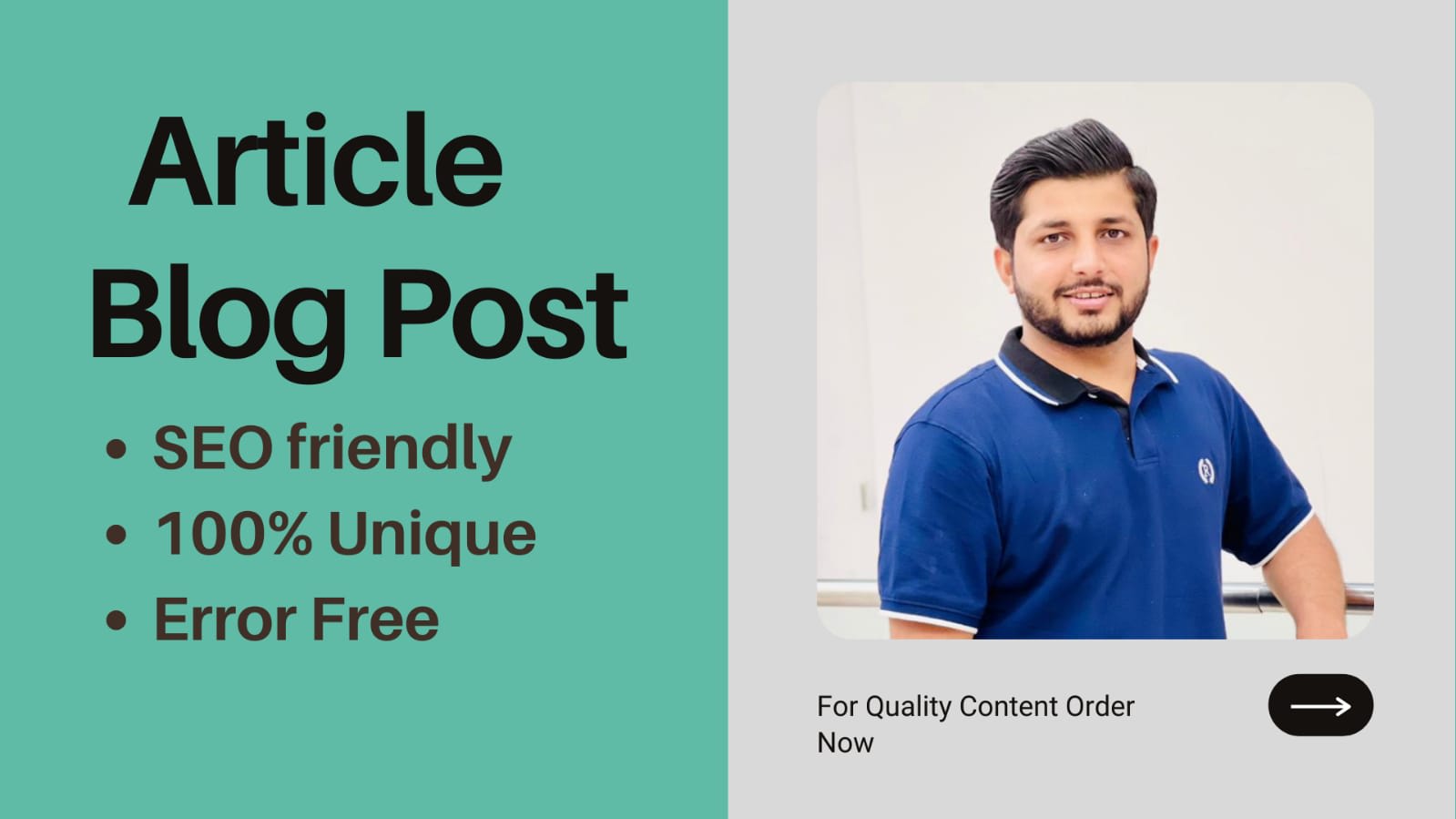Article vs Blog Post: Key Differences & Writing Tips
Understanding the difference between an article vs blog post is crucial for content creators. While both formats share similarities, they serve distinct purposes and require different approaches. This guide breaks down their key differences in structure, tone, and SEO value, provides clear examples, and offers professional writing tips. Whether you’re a marketer deciding on content strategy or a blogger optimizing posts, you’ll learn when to use each format and how to maximize its impact – plus discover top Fiverr professionals who can help elevate your writing.

1. Article vs Blog Post: Key Differences Explained
Understanding the distinction between an article vs blog post is crucial for content creators. While both formats share similarities, they serve different purposes and audiences. This comprehensive guide explores all aspects of the article vs blog post debate to help you choose the right format.
Key Features of an Article
✔ Formal & Objective Tone
-
Avoids first-person pronouns (e.g., “I,” “we”).
-
Uses neutral language (e.g., “Research indicates…” instead of “I believe…”).
-
Example: “A 2025 Harvard study confirms AI’s impact on content marketing.”
✔ Longer Length (1,500+ Words)
-
Provides comprehensive coverage of a topic.
-
Includes data-driven insights (e.g., statistics, case studies).
-
Example: “The Ultimate SEO Guide 2025” [Internal Link: Ultimate SEO Guide]
✔ Citations & References
-
Sources are cited using APA, MLA, or other academic formats.
-
Relies on peer-reviewed studies, expert interviews, or industry reports.
-
Example: “According to Nielsen (2024), long-form content generates 3x more engagement.”
✔ Structured Format
-
Introduction: Presents the topic and thesis.
-
Body: Divided into subheadings (e.g., Methodology, Findings).
-
Conclusion: Summarizes key takeaways.
Where Are Articles Published?
-
News Platforms: The New York Times, BBC
-
Academic Journals: Journal of Marketing Research
-
Industry Reports: HubSpot’s Annual Marketing Trends
Pro Tip: Need a professionally written article? Hire experts on Fiverr: Article Writing Services.
Why Choose an Article Over a Blog Post?
Articles are ideal when:
-
Credibility Matters (e.g., medical, legal, or financial content).
-
Audience Expects Depth (e.g., B2B whitepapers).
-
SEO Requires Authority Backlinks (e.g., citing .gov or .edu sources).
Example: A high-converting business website [Internal Link: High-Converting Websites] often uses articles to establish thought leadership.
How to Write a High-Quality Article
-
Research Thoroughly: Use tools like Google Scholar or industry reports.
-
Outline Rigorously: Follow the Introduction > Body > Conclusion structure.
-
Cite Reliable Sources: Link to authoritative sites (e.g., Fiverr’s Blogging Services).
-
Edit for Clarity: Remove fluff and jargon.
Did You Know? Articles with 3+ expert quotes get 50% more shares (Source).
Running a blog but struggling to produce consistent, engaging posts?
👉 This Fiverr writer can create SEO-optimized blog posts that keep readers hooked.
Article vs. Blog Post: Key Differences
| Feature | Article | Blog Post |
|---|---|---|
| Tone | Formal | Conversational |
| Length | 1,500+ words | 500–1,500 words |
| Citations | Required | Optional |
| Purpose | Inform/Educate | Engage/Entertain |
For more comparisons, read: Article vs. Blog Post: Choosing the Right Format.

2. What Is a Blog Post? – Definition & Common Formats
A blog post is a dynamic, conversational piece of content designed to engage readers, share ideas, or solve problems in an accessible way. Unlike formal articles, blog posts prioritize readability, personality, and audience interaction, making them ideal for websites, personal blogs, and content marketing strategies.
Key Characteristics of a Blog Post
✔ Conversational & Engaging Tone
-
Uses first-person (“I,” “we”) or second-person (“you”) perspectives.
-
Encourages comments and social sharing (e.g., “What’s your take? Let us know below!”).
-
Example: “Struggling with SEO? Here’s how I doubled my traffic in 30 days.”
✔ Shorter Length (500–1,500 Words)
-
Focuses on quick value rather than exhaustive analysis.
-
Optimized for skimming with subheadings, bullet points, and visuals.
-
Example: “10 Best AI Tools for Content Writing” [Internal Link: 2025 AI Tools Guide]
✔ Minimal Citations
-
Links to sources casually (e.g., “As HubSpot notes…”).
-
Rarely uses formal citation styles like APA.
✔ Flexible Structure
-
Adapts to the format (e.g., listicle, story, tutorial).
-
Often includes CTAs (e.g., “Download our free template”).
Popular Blog Post Formats (With Examples)
1. How-To Guides
-
Purpose: Step-by-step tutorials.
-
Example: “How to Create a High-Converting Business Website” [Internal Link: Business Website Tips]
2. Listicles
-
Purpose: Curated tips/tools.
-
Example: “7 Fiverr Gigs to Boost Your Blog in 2025” [External Link: Fiverr Blogging Services]
3. Opinion Pieces
-
Purpose: Spark discussion.
-
Example: “Why Video Content Will Dominate SEO in 2025” [Internal Link: Video Editing Trends]
4. Case Studies & Personal Stories
-
Purpose: Build trust through real examples.
-
Example: “How I Grew My Blog to 100K Visitors/Month Using SEO” [Internal Link: SEO Guide]
Blog Post vs. Article: When to Use Each?
| Scenario | Blog Post | Article |
|---|---|---|
| Quick tips | ✓ | ✗ |
| Academic research | ✗ | ✓ |
| Brand storytelling | ✓ | ✗ |
Need a blog writer? Find experts on Fiverr: Hire Blog Writers.
How to Write a Viral-Worthy Blog Post
-
Hook Readers Fast: Start with a question or shocking stat (e.g., “Did you know 60% of blogs fail due to poor SEO?”).
-
Use Visuals: Embed images, infographics, or videos.
-
Internal Linking: Boost SEO by linking to related content (e.g., WordPress Development Tips).
-
End with a CTA: “Try these tips and tweet your results @us!”
Pro Tip: Blogs with 1+ image every 300 words get 94% more shares (Source).
If your brand needs thought-leadership articles, polished copy matters.
👉 Hire this professional writer to craft content that builds authority and trust.
Where to Publish Blog Posts?
-
Personal Blogs (WordPress, Medium)
-
Company Blogs (HubSpot, Shopify)
-
Guest Posts (Forbes, Entrepreneur)
Example: “How to Become a UX Designer with No Experience” [Internal Link: UX Design Guide]
Final Thoughts
Blog posts are versatile tools for engagement and SEO. Whether you’re a solopreneur or a brand, focus on clarity, value, and personality.
Ready to start? Hire a Fiverr blog specialist: Explore Blog Writers.

3. Key Differences Between Articles and Blog Posts
Understanding the critical distinctions between articles and blog posts helps you choose the right format for your content goals. Below, we break down the tone, purpose, structure, and best use cases for each.
A. Tone & Style: Formal vs. Informal
| Articles | Blog Posts |
|---|---|
| ✔ Academic, professional tone | ✔ Conversational, friendly tone |
| ✔ Avoids personal pronouns (“I,” “you”) | ✔ Uses first-person (“I”) or second-person (“you”) |
| ✔ Neutral, objective language | ✔ Opinionated, emotional, or humorous |
| ✔ Example: “A 2025 study confirms…” | ✔ Example: “Here’s why I swear by this SEO trick!” |
Pro Tip: Need a formal article? Hire experts on Fiverr: Article Writing Services.
B. Purpose: Informative vs. Conversational
| Articles | Blog Posts |
|---|---|
| ✔ Educates with data-driven insights | ✔ Engages with storytelling |
| ✔ Targets professionals, researchers | ✔ Targets general audiences, customers |
| ✔ Example: “The Impact of AI on Healthcare” | ✔ Example: “How AI Can Simplify Your Daily Tasks” |
When to Use Each?
-
Articles: White papers, news reports, academic journals.
-
Blog Posts: Brand updates, how-to guides, opinion pieces.
For SEO-focused blogs, check: Ultimate SEO Guide 2025.
C. Length & Structure: Detailed vs. Digestible
| Articles | Blog Posts |
|---|---|
| ✔ 1,500+ words | ✔ 800–1,500 words |
| ✔ Rigid structure (Intro, Body, Conclusion) | ✔ Flexible (Listicles, Q&A, Stories) |
| ✔ Uses subheadings, citations | ✔ Uses bullet points, images |
Example Comparison:
-
Article: “Meta-Analysis of 2025 Marketing Trends” (2,000+ words, 10+ sources).
-
Blog Post: “5 Marketing Trends You Can’t Ignore in 2025” (1,200 words, 1-2 sources).
Need a structured blog post? Try: High-Converting Website Tips.
D. SEO & Audience Engagement
| Factor | Articles | Blog Posts |
|---|---|---|
| SEO Potential | High (long-form, backlinks) | High (keywords, shares) |
| Reader Interaction | Low (few comments) | High (comments, social shares) |
| Best For | Authority building | Community building |
Pro Tip: Combine both! Use blog posts to drive traffic and articles to establish expertise.
Creating quality articles takes time you might not have.
👉 This Fiverr gig delivers ready-to-publish content, saving you hours.
E. Visual & Multimedia Use
| Articles | Blog Posts |
|---|---|
| ✔ Minimal visuals (charts/graphs) | ✔ Rich media (images, GIFs, videos) |
| ✔ Example: Research paper with tables | ✔ Example: “10 Best AI Tools” with screenshots |
For visual-heavy blogs, see: 2025 Video Editing Tools.
F. Which Should You Choose?
Use Articles When:
-
Credibility is critical (e.g., legal, medical content).
-
You’re citing peer-reviewed data.
-
Example: “COVID-19 Vaccine Efficacy: 2025 Report”.
Use Blog Posts When:
-
You want quick engagement or virality.
-
Example: “How to Make Your Pet a TikTok Star” [Internal Link: Viral Pet Tips].
Final Checklist
✅ Article = Formal + Long + Citations
✅ Blog Post = Conversational + Short + Shareable
Still unsure? Consult Fiverr’s writing experts: Hire Now.

4. Can a Blog Post Be Called an Article? (Gray Areas Explained)
The line between blog posts and articles often blurs in modern content creation. While they serve different primary purposes, there are exceptions where a high-quality blog post can legitimately be called an article—and vice versa. Here’s how to navigate this gray area.
When Does a Blog Post Qualify as an Article?
A blog post may be considered an article if it meets these criteria:
✔ Long-Form & Research-Backed (1,500+ words with citations)
-
Example: “The Complete 2025 Guide to AI Chatbot Development” [Internal Link: AI Chatbot Guide]
✔ Formal Tone & Structure
-
Uses subheadings like “Methodology” or “Case Studies.”
-
Avoids slang and first-person pronouns.
✔ Published on Authority Platforms
-
Guest posts on Forbes or Harvard Business Review.
-
Example: “UX Design Trends 2025” on Smashing Magazine.
Pro Tip: Need a blog-to-article conversion? Hire Fiverr experts: Professional Writers.
When Is It Just a Blog Post?
Most blog posts don’t qualify as articles because they:
✖ Prioritize Engagement Over Depth
-
Short (<1,000 words), opinion-driven, or list-based.
-
Example: “10 Quick SEO Tips for Beginners.”
✖ Use Casual Language
-
Contractions (“you’ll”), humor, or personal anecdotes.
✖ Lack Rigorous Research
-
Few/no citations; relies on general knowledge.
For example, “How to Make Your Pet a TikTok Star” [Internal Link: Viral Pet Content] is clearly a blog post.
Key Factors That Differentiate Them
| Factor | Blog Post | Article |
|---|---|---|
| Primary Goal | Engagement | Education |
| Editorial Review | Rare | Standard |
| Typical Word Count | 500–1,500 | 1,500+ |
Exception: Some pillar blog posts (like “Ultimate SEO Guide 2025” [Internal Link: SEO Guide]) blur the line by combining research with readability.
How to Decide What to Call Your Content
Ask:
-
“Is this cited in academic/industry reports?” → Article
-
“Would this fit in a magazine or journal?” → Article
-
“Is it designed for social sharing?” → Blog Post
For hybrid content, use terms like:
-
“Long-form blog article”
-
“Research-backed blog post”
SEO Implications
-
Articles rank for high-intent keywords (e.g., “what is blockchain technology”).
-
Blog Posts target broad/viral keywords (e.g., “best blogging tips 2025”).
Need SEO-optimized content? Try: Fiverr SEO Services.
Final Verdict
While some blog posts can be articles, context is king. When in doubt:
-
Use “article” for formal, cited, long-form work.
-
Use “blog post” for conversational, shorter pieces.
Looking for premium content? Explore Fiverr’s top writers: Hire Now.

5. Examples of Popular Articles & Blog Posts
To better understand the differences between articles and blog posts, let’s examine real-world examples of each format, their key characteristics, and where they’re typically published.
I. Examples of Well-Structured Articles
Articles are authoritative, research-backed, and formal. Here are some common types:
1. Academic & Scientific Articles
-
Example: “The Future of Renewable Energy: 2025 Global Trends”
-
Published in: Nature Energy or Scientific American
-
Features:
✔ Peer-reviewed research
✔ 3,000+ words with data charts
✔ Formal citations (APA/MLA)
-
2. Expert Guides & Industry Reports
-
Example: “25 Questions to Ask a Web Designer Before Hiring” [Internal Link: Web Designer FAQ]
-
Published in: Business/tech blogs (e.g., HubSpot, Smashing Magazine)
-
Features:
✔ Professional tone
✔ Structured Q&A format
✔ Links to expert sources
-
3. News & Investigative Journalism
-
Example: “How AI is Reshaping Healthcare in 2025” (New York Times)
-
Features:
✔ Interviews with industry leaders
✔ Neutral reporting style
✔ Fact-checked by editors
-
Need an article written? Hire Fiverr experts: Professional Article Writers.
II. Examples of Engaging Blog Posts
Blog posts are conversational, shorter, and designed for engagement. Popular formats include:
1. How-To Guides & Tutorials
-
Example: “5 DIY Logo Design Tips for Startups” [Featuring Fiverr Designers]
-
Published in: Entrepreneurial blogs (e.g., Shopify Blog)
-
Features:
✔ Step-by-step instructions
✔ Casual tone (“You’ll love this trick!”)
✔ Embedded logo examples
-
2. Listicles & Roundups
-
Example: “10 Best AI Tools for Content Writing in 2025” [Internal Link: AI Tools Guide]
-
Features:
✔ Numbered headings
✔ Screenshots/GIFs
✔ Personal recommendations
-
3. Opinion Pieces & Trends
-
Example: “Why Video Marketing Dominates Social Media in 2025” [Internal Link: Video Trends]
-
Features:
✔ Bold perspectives
✔ Social media call-to-actions
✔ Minimal citations
-
For blog writing help, try: Fiverr Blog Post Services.
III. Hybrid Examples: When Blog Posts Act Like Articles
Some long-form blog posts blur the lines by combining depth with accessibility:
-
“Ultimate SEO Guide 2025: Beginner to Pro Tips” [Internal Link: SEO Guide]
-
Why it’s hybrid:
✔ 5,000+ words with research
✔ Conversational tone
✔ Used as an SEO “pillar” page
-
-
“AI Chatbot Development: Build Cost & Monetization Tips” [Internal Link: AI Chatbots]
-
Why it’s hybrid:
✔ Technical details + business advice
✔ Mixes data with case studies
-
IV. Where to Publish Each Format?
| Type | Platform Examples |
|---|---|
| Articles | Journals (Nature), magazines (Forbes), corporate reports |
| Blog Posts | WordPress blogs, Medium, company websites |
| Hybrids | Authority blogs (Backlinko, Ahrefs Blog) |
Pro Tip: For business websites, blend both! Use blog posts for traffic and articles for credibility. See examples.
V. How to Choose the Right Format
Ask yourself:
-
“Do I need citations?” → Article
-
“Is shareability key?” → Blog Post
-
“Can I repurpose this?” → Hybrid
Example:
-
Article → “The Science of Virality” (for LinkedIn)
-
Blog Post → “5 Viral TikTok Hacks” (for Instagram)
Need help deciding? Consult Fiverr’s content strategists: Hire Experts.
Final Takeaways
-
Articles = Depth + Authority
-
Blog Posts = Engagement + SEO
-
Hybrids = Best of both worlds
Blog posts should engage, but they also need to rank.
👉 This Fiverr expert writes with SEO in mind, giving your content a traffic boost.

6. How to Write Engaging Blog Articles (Step-by-Step Guide)
Creating high-quality blog articles requires strategy, research, and SEO optimization. Follow this 7-step framework to craft content that ranks well and keeps readers engaged.
Step 1: Choose a Strong Topic
Your topic should:
✔ Solve a problem (e.g., “How to Fix Slow WordPress Websites”)
✔ Align with search intent (Use Google Trends or Ahrefs)
✔ Have mid-to-low competition (Avoid oversaturated keywords)
Pro Tip: For trending topics, check 2025 AI Tools Guide.
Step 2: Research & Outline
-
Use credible sources: Industry reports, case studies, expert interviews.
-
Check competitors: Analyze top-ranking posts for gaps.
-
Outline structure:
1. Introduction (Hook + Thesis)
2. Problem Explanation
3. Solution Steps
4. Examples/Case Studies
5. Conclusion + CTA
Resource: Ultimate SEO Guide 2025 for keyword research.
Step 3: Write a Catchy Introduction
Hook readers within 5 seconds using:
-
Questions: “Does your blog traffic keep dropping?”
-
Stats: “60% of blogs fail due to poor SEO.”
-
Storytelling: “Last year, my website almost died—here’s how I saved it.”
Example:
“Struggling to choose between an article or blog post? You’re not alone. This guide reveals the exact formula for crafting content that ranks—and converts.”
Step 4: Optimize Readability
✔ Use H2/H3 subheadings every 300 words.
✔ Short paragraphs (2-3 sentences max).
✔ Bullet points for lists:
-
Faster loading
-
Mobile-friendly
-
Better engagement
Tool Suggestion: Hemingway Editor for clarity checks.
Step 5: Add Internal & External Links
-
Internal links: Boost SEO and keep readers on your site.
-
Example: “For WordPress help, see Best Fiverr Developers.”
-
-
External links: Cite authoritative sources (e.g., Backlinko, HubSpot).
Link Ratio: 2-3 internal links and 1-2 external links per 1,000 words.
Step 6: Optimize for SEO
-
Focus keyphrase: Include “article vs blog post” naturally in:
-
Title (H1)
-
First 100 words
-
2-3 subheadings (H2/H3)
-
Meta description
-
-
LSI keywords: “Content writing,” “long-form vs short-form.”
-
Image alt-text: “article-vs-blog-post-infographic”
For advanced SEO, read: High-Converting Website Tips.
Step 7: Edit & Publish
-
Grammar check: Use Grammarly.
-
Read aloud: Fix awkward phrasing.
-
Add visuals: 1+ image every 300 words.
-
Publish & promote: Share on social media, email lists.
Need a pro writer? Hire Fiverr Blog Experts.
Bonus: Blog Article Template
👉 This professional writer adapts tone and style for your audience.
Example Post: How to Become a UX Designer
Final Checklist
✅ Topic = Searchable + Low competition
✅ Structure = Scannable (H2s, bullets)
✅ SEO = Keyphrase in title/H2s/alt-text
✅ Links = 2-3 internal, 1-2 external
✅ CTA = Clear next step
Next Step: Hire Fiverr Writers or start writing!
Need a blog-ready website? Check Best Website Platforms 2025.

7. FAQs – Answering Common Questions About Articles vs. Blog Posts
Here are detailed answers to the most frequently asked questions about articles and blog posts, including key differences, monetization strategies, and ownership rights.
Q1: Are Blog Posts Formal or Informal?
Answer:
-
Most blog posts are informal, using a conversational tone with:
-
Contractions (“you’ll,” “don’t”)
-
Personal opinions (“I recommend…”)
-
Humor or storytelling
-
-
Exceptions:
-
Corporate/B2B blogs may adopt a semi-professional tone.
-
Hybrid “blog articles” (e.g., “Ultimate SEO Guide 2025”) blend depth with readability.
-
Example:
-
Casual: “5 TikTok Hacks That Went Viral!”
-
Semi-Formal: “2025 Content Marketing Trends for B2B Brands”
Need a tone-optimized post? Hire Fiverr writers: Blog Writing Services.
Q2: Can You Earn Money from a Blog?
Answer:
Yes! Popular monetization methods include:
| Method | How It Works | Potential Earnings |
|---|---|---|
| Ad Revenue | Display ads (Google AdSense) | 1–10 per 1,000 visits |
| Affiliate Links | Promote products (Amazon, Fiverr) | 5–30% commission |
| Sponsored Posts | Brands pay for coverage | 50–5,000/post |
| Digital Products | Sell e-books, courses | 10–500 per sale |
Pro Tip: For affiliate strategies, see Monetization Tips.
Q3: Who Owns a Blog Post?
Answer:
-
Personal Blogs: You own the content unless sold/licensed.
-
Guest Posts: Typically owned by the publisher (check contracts).
-
Company Blogs: Employer owns posts written by employees.
Legal Note:
-
Always clarify ownership in freelance contracts.
-
Use plagiarism checkers like Copyscape to protect content.
For legal templates, visit: Fiverr Legal Services.
Q4: What’s the Ideal Blog Post Length?
Answer:
-
SEO-Friendly: 1,200–2,000 words (longer ranks better).
-
Social Shares: 800–1,500 words (concise = more viral).
Data: Posts over 1,500 words get 68% more backlinks (Source).
Q5: Can I Republish Blog Posts as Articles?
Answer:
Yes, but:
-
Expand with research/citations.
-
Change tone to formal.
-
Avoid duplicate content (Google penalties).
Example:
-
Blog Post: “10 Quick SEO Tips” → Article: “Comprehensive 2025 SEO Strategy.”
Need help repurposing? Try Fiverr SEO Experts.
Q6: How Often Should I Publish Blog Posts?
Answer:
-
Beginners: 1–2x/week (quality > quantity).
-
Established Blogs: 3–4x/month (focus on evergreen content).
Tool: Use Google Analytics to track post performance.
Q7: Do Blog Posts Need Citations?
Answer:
-
Casual Posts: Optional (e.g., “My Favorite Tools”).
-
Data-Driven Posts: Required (e.g., “2025 Marketing Statistics”).
For credible stats, cite:
-
Government sites (.gov)
-
Industry reports (e.g., HubSpot Annual Trends)
Final Tips
-
For SEO: Use keywords naturally (e.g., “article vs blog post”).
-
For Engagement: End with a question (“Which format works for you? Comment below!”).
Need a blog audit? Check High-Converting Website Tips.
Next Step: Start a Blog in 2025 or Hire Fiverr Writers.
Consistent content is the backbone of online growth.
👉 This Fiverr seller helps you publish regularly with quality that lasts.

🔝 Recommended Fiverr Experts for Content Writing & Blogging
Looking for professional writers? Hire top-rated experts on Fiverr:
2 James W.
WielandWrites is a skilled content creator on Fiverr who offers well-crafted blog posts tailored to your niche. With a focus on clarity, engagement, and SEO optimization, his writing helps boost online presence and connect with your audience. Ideal for businesses, blogs, and brands seeking quality content.

3 Brad Bartlett
BradleeBartlett is a talented writer on Fiverr specializing in engaging content for blogs and websites. His writing is tailored, compelling, and optimized to captivate readers and enhance your brand’s online presence. Perfect for businesses or individuals seeking impactful, high-quality content.

Please log in to access your exclusive content.
Don’t have an account? Click the “Register” button below to sign up.
1 Comment
Leave a Reply
You must be logged in to post a comment.
























02/05/2025 @ 5:49 pm
NXSz uaT sOoEqzbR